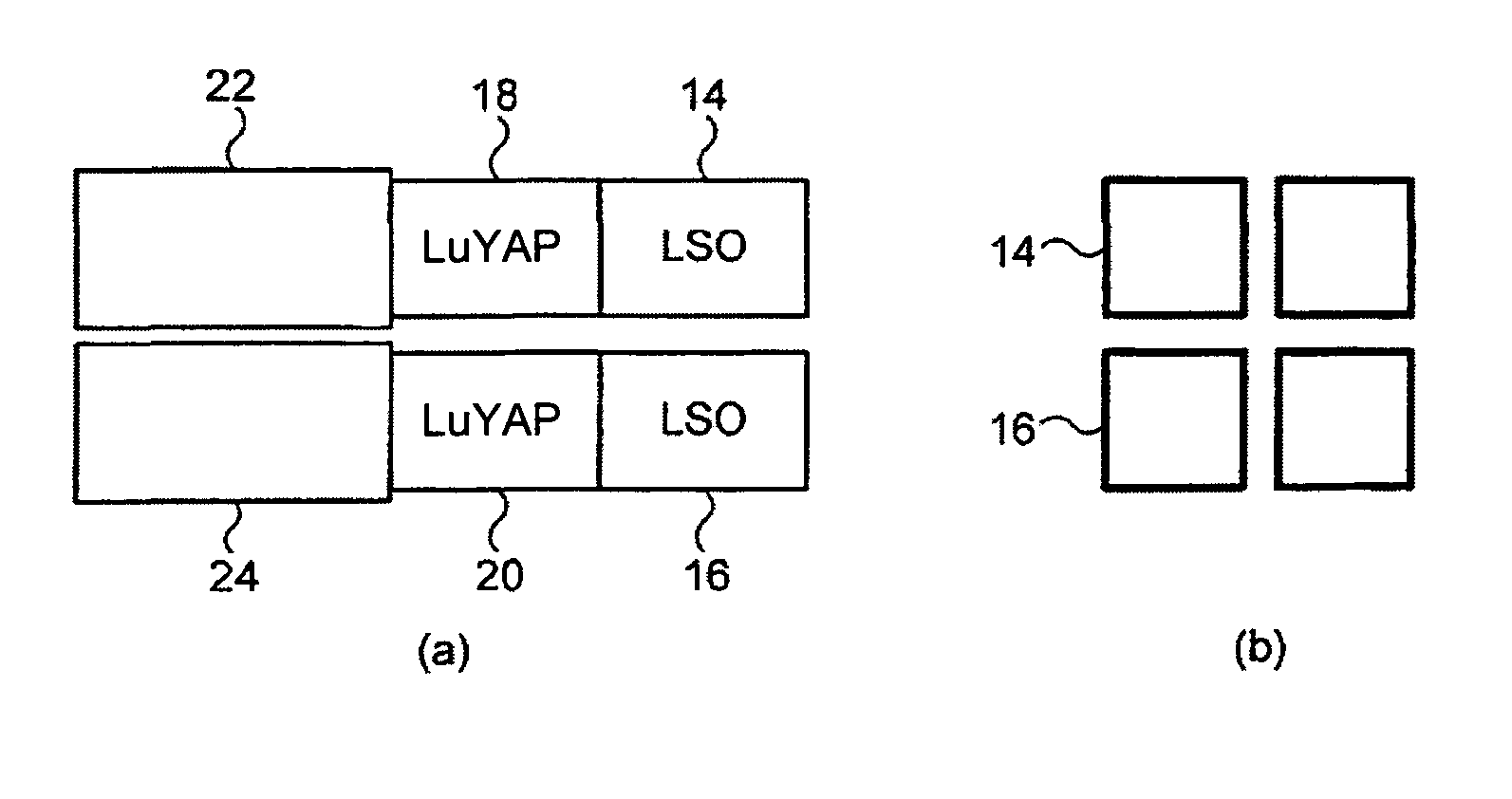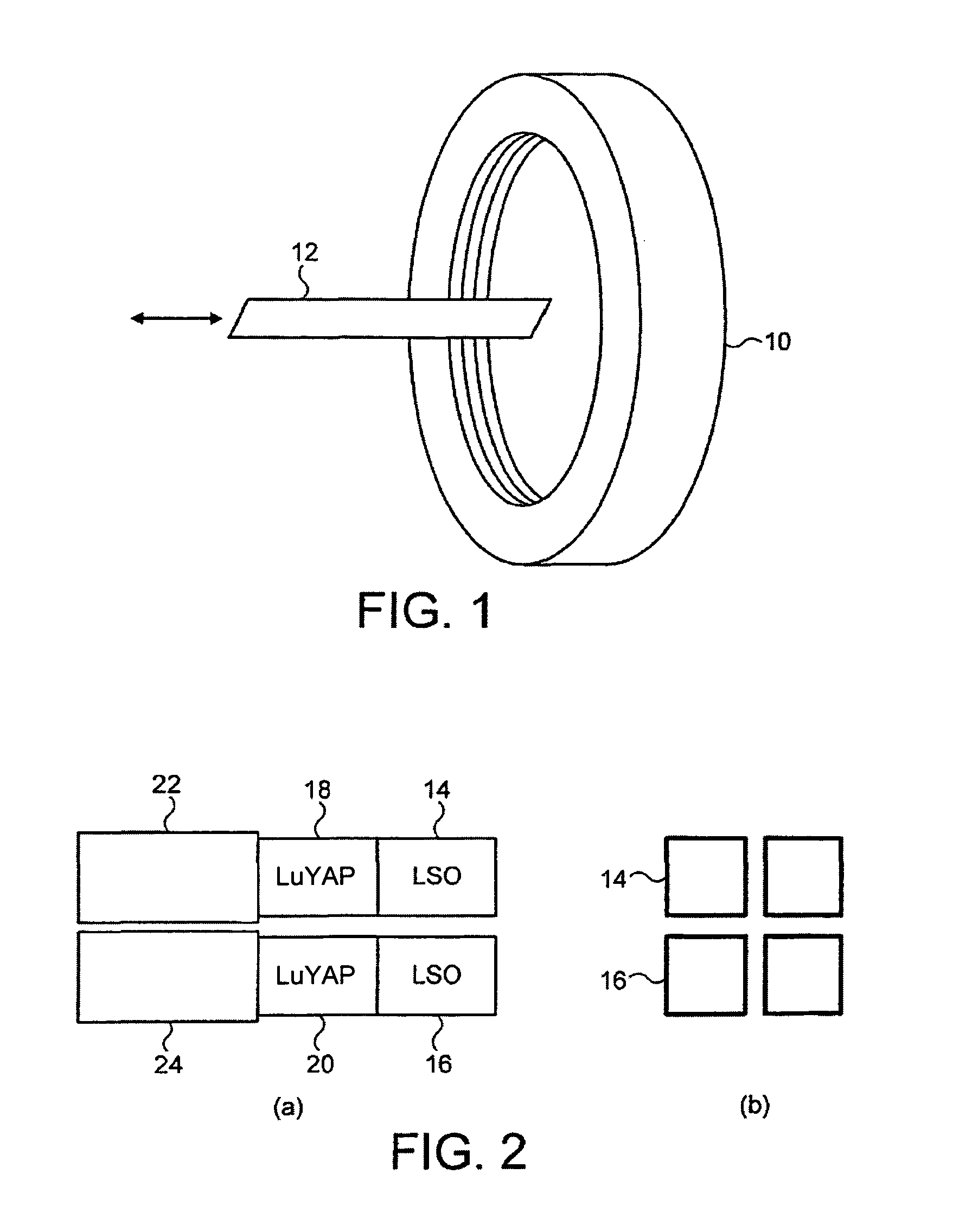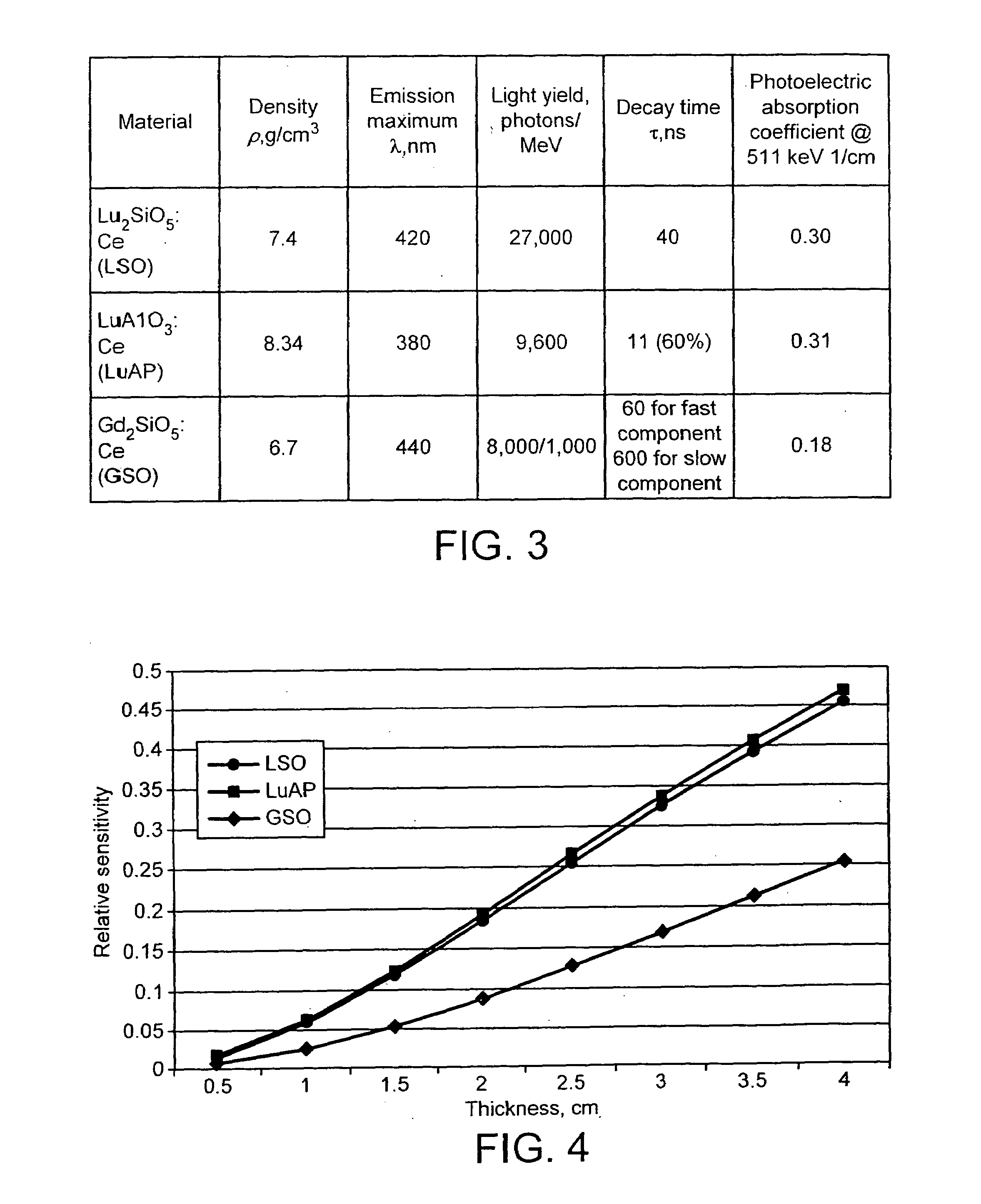PET scanner
a technology scanner, which is applied in the field of positron emission tomography (pet) camera or scanner, can solve the problems of increasing the cost, reducing the spatial resolution at the edge and geometric limitation of the spatial resolution at the end of the field of view of the pet scanner
- Summary
- Abstract
- Description
- Claims
- Application Information
AI Technical Summary
Problems solved by technology
Method used
Image
Examples
Embodiment Construction
[0040]The PET in which the invention is embodied uses scintillators that comprise lutetium based crystals. In particular, the scintillator in which the invention is embodied uses lutetium-yttrium-aluminate-perovskite, with the proportions of Lu and Y defined by LuxY1−xAP (where 0.5≦x≦0.995). This material has many properties that make it useful as a scintillator; hereinafter it is referred to as Lu YAP.
[0041]FIGS. 2(a) and (b) show two scintillators for a PET scanner, each of which comprises an inner layer of LSO 14,16 and a layer of LuYAP 18,20. Each layer of LSO and LuAP is preferably less than 20 mm thick. Adjacent each LuYAP layer 18, 20 and optically coupled thereto is a photodetector 22,24 for detecting light emitted either from the LSO 14,16 or the LuAP 18,20. The photodetectors 22,24 can be of any suitable type, but typically include photo-multipliers or avalanche photodiodes. Signals from the photodetectors 22,24 are processed using read-out electronics (not shown). In prac...
PUM
 Login to View More
Login to View More Abstract
Description
Claims
Application Information
 Login to View More
Login to View More - R&D
- Intellectual Property
- Life Sciences
- Materials
- Tech Scout
- Unparalleled Data Quality
- Higher Quality Content
- 60% Fewer Hallucinations
Browse by: Latest US Patents, China's latest patents, Technical Efficacy Thesaurus, Application Domain, Technology Topic, Popular Technical Reports.
© 2025 PatSnap. All rights reserved.Legal|Privacy policy|Modern Slavery Act Transparency Statement|Sitemap|About US| Contact US: help@patsnap.com



